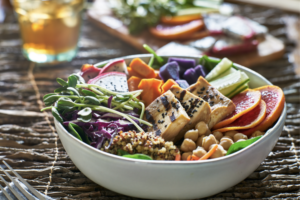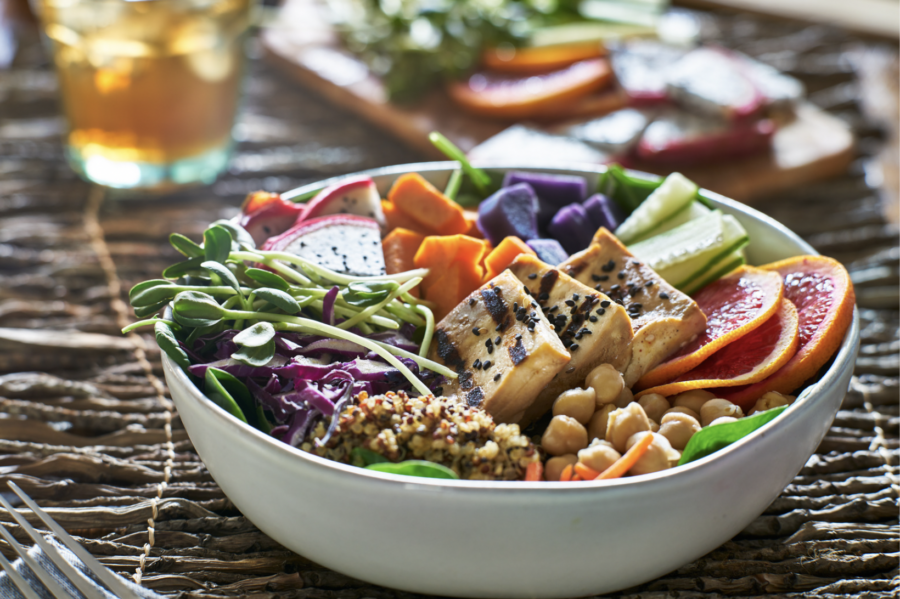If you’re one of many people with ADHD, nutrition might become one of the first areas to spiral when life feels chaotic — not because you don’t care, but because executive-function struggles make meal planning, grocery shopping, and cooking feel totally overwhelming.
Skipping meals, grabbing whatever’s easy, or living off snacks isn’t laziness — it’s often a reflection of the mental clutter and decision fatigue ADHD brings. The brain is in constant overdrive, and food choices tend to mirror that.
The good news? With the right strategies, nutrition can shift from a source of stress to a powerful tool for support.
In 10+ years as a nutritionist, I did not expect to see this…
More than 60% of my clients are diagnosed ADHD – and those are just the ones that are actually diagnosed.
I suppose this shouldn’t be surprising, given the known link between ADHD and movement/fitness.
It’s said that people with ADHD often gravitate toward movement because it helps regulate their brain chemistry. Physical activity boosts dopamine, norepinephrine, and serotonin — the very neurotransmitters that are typically underactive in ADHD brains. So whether it’s intense weightlifting, running, CrossFit, or even a brisk walk, exercise becomes a kind of natural self-medication.
See more about the link between ADHD and physical exercise here.
🍳 Nutrition Strategies That Work With Your Brain, Not Against It
Here are a few ADHD-friendly ways to make nutrition easier, more consistent, and way less stressful:
1. Focus on Consistency over Perfection
Perfection is the enemy of eating consistently. Consistency is showing up 5 days a week. Trying to be perfect is showing up for 10 days in a row and then quitting when you miss a day because you think you’ve failed.
An all-in mindset means allowing ‘off days’ into the plan. An all-or-nothing mindset derails your plan.
2. Keep Snacks That Count
Your snack stash should work for you. Load up on options with protein and fiber like Greek yogurt, boiled eggs, protein bars, trail mix, or hummus and crackers. If it’s grab-and-go, it’s gold.
3. Pick a Meal Prep Shortcut
Meal prep doesn’t have to mean spending hours in the kitchen. Batch-cook just one or two proteins or carbs for the week, or double up on dinner and eat the leftovers for lunch. Prep is still prep!
4. Use Visual Cues
Out of sight = out of mind is real. Keep healthy options where you can see them — fruit on the counter, veggies at eye level in the fridge, water bottle on your desk. Make the healthy choice the easy choice.
5. Lean on Repetition
If you find a meal that works, eat it often! ADHD brains thrive on novelty in some areas and repetition in others. A few go-to breakfast or lunch options can remove decision fatigue during busy days.
6. Set Reminders to Eat
If you forget to eat, try setting timers or phone alarms. Bonus: pair meals with another habit like morning coffee or post-workout recovery to help build consistency.
7. Stay Fueled to Stay Focused
Balanced meals and steady blood sugar = better focus, fewer mood crashes, and more energy. Prioritize protein, fiber, and healthy fats to stay fuller longer and support your brain function.

🧠 The Bottom Line
You’re not lazy, broken, or unmotivated. You’re managing a neurodivergent brain in a world built for neurotypicals — and that takes creativity, self-compassion, and smart strategies. Nutrition can be one of your best tools for supporting your energy, focus, and overall mental clarity.
You don’t need a perfect meal plan — you just need a plan that works for you.
Let food support your focus, not add to the chaos. You’ve got this!
Need help putting these strategies into action? That’s exactly what I help people with in my coaching and online challenges — ADHD-friendly, real-life nutrition that fits your brain and your goals. Reach out anytime!



